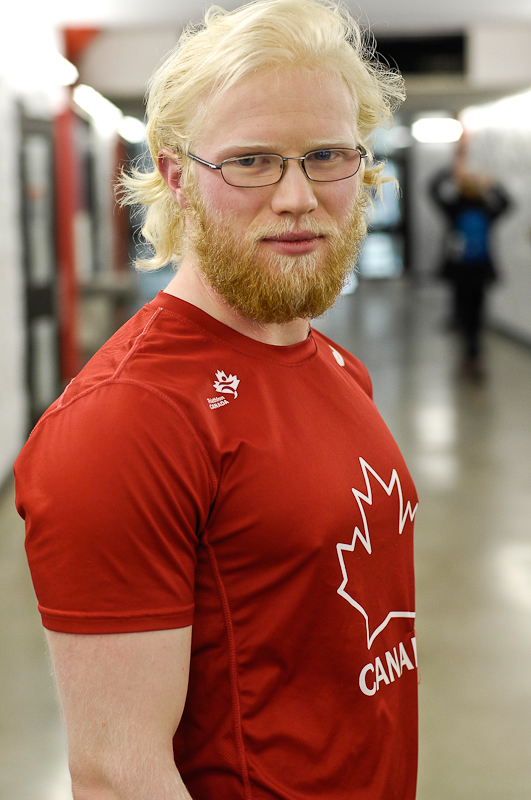Carleton student David Blair was hoping to return to the Paralympics in 2016, but a reclassification of his vision means his Paralympic dreams are dashed.
“Everything that I can do isn’t in spite of my vision—the vision is the source. It’s a source of so much of my strength that I can’t understand how it can be a weakness,” said Blair, a visually impaired athlete.
Combined with physical strength, Blair’s vision led him to compete as a rower at the 2012 Paralympics in London.
With Blair in the boat, Team Canada placed seventh. He has since also branched out into paratriathlons.
“My vision is part of my identity and I’ve worked it into a really positive part of who I am,” Blair said. “It’s why I’ve been able to compete all over the world.”
That changed when Blair travelled to Edmonton to compete in the 2014 World Triathlon Championship, hosted by the International Triathlon Union.
For the competition, Blair needed to pass a qualification test for visually impaired athletes, but failed.
Blair had been classified as a B3 level athlete. Following the lesser-sighted B1 and B2 levels, B3 athletes are the most sighted in parasport and can distinguish shapes and colour.
Blair was classified as “too sighted” to compete, and was disqualified from the race.
On his way from the room, Blair said he recalls bumping into a table because he couldn’t see it. The irony, he said, was not lost on him.
Instead of competing in the race that would have pitted him against some of his fiercest competition, Blair watched from the sidelines.
“It’s not so much a judgment of how well can you see, it’s a label of who you are and they took that away,” he said. “Everything just kind of shut down. Frustrating doesn’t do it justice.”
Born with albinism, Blair’s vision started poor and slowly deteriorated.
Though he can distinguish shapes and colour, Blair says he can’t make out details. Even with glasses, the 23-year-old Carleton student is considered legally blind.
Blair’s impairment bars him from certain activities, such as driving. Growing up, his worsening sight also interfered with sports.
For a while, Blair played soccer. At first, he couldn’t follow the ball, and then he had trouble seeing his teammates clearly. When plays became too fast, Blair said he quit the sport.
He then turned to rowing. Blair got his break in 2010 when Canada’s pararowing team needed to fill a spot in their boat. He stepped in during a practice, and said the boat promptly “went faster.”
For two years, Blair competed as the youngest member of the team. When his entire team retired following the 2012 Paralympics, Blair was left adrift.
Without competitions to train for, Blair said he felt restless. That was when he discovered a new outlet for his athleticism in paratriathlons.
He quickly became one of Canada’s brightest competitors, placing fourth in North America at his first paratriathlon.
Considering his success, Blair said he planned to race at the 2016 Paralympics in both pararowing and paratriathlon.
“I had all of the ingredients I felt were necessary,” he said.
Blair’s declassification isn’t just a personal setback—it could be a hit to Canada’s Paralympic prospects.
“There are no other ways around it, he was a top podium potential,” said Michel Elibani, one of Blair’s paratriathlon coaches. “Athletically he’s very strong, he’s very gifted.”
Elibani, who works for Canada’s National Paratriathlon Training Academy, said he expected Blair to win gold at the 2016 Paralympics in Rio de Janeiro.
He said Blair’s greatest strength is his “above average” mental focus.
Blair is now turning that focus to other outlets such as poetry and painting.
“I’m just trying to get excited about exploring the parts of me that I had to ignore while training,” he said.
Although Blair no longer trains at the same intensity, he continues to run, cycle, and swim. He said he plans to challenge his declassification at the next convenient paratriathlon.






